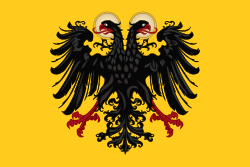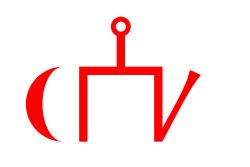Den store krig med Den Tyske Orden
| Den store krig med Den Tyske Orden | |||||||
|---|---|---|---|---|---|---|---|
| Del af det Litauiske korstog | |||||||
Slaget ved Grunwald af Jan Matejko (1878) | |||||||
| |||||||
| Parter | |||||||
Den Tyske Ordens vassalstater:
Støtte:
|
Polens vassalstater:
Litauens vassalstater:
Støtte:
| ||||||
| Ledere | |||||||
|
| ||||||
Den store krig med Den Tyske Orden (polsk: Wielka wojna z zakonem krzyżackim), ofte blot kaldet Den store krig, var en krig, der fandt sted i årene 1409 til 1411 mellem Den Tyske Orden på den ene side og de allierede Kongeriget Polen og Storhertugdømmet Litauen på den anden. Krigen begyndte efter lokale samogitiske oprør inspirerede Den Tyske Orden til at invadere Polen i august 1409. Da ingen af siderne var parate til en regulær krig lykkedes det Wenzel 4. af Luxemburg at forhandle en 9-måneders våbenhvile på plads.
Efter våbenhvilen udløb i juni 1410 blev krigermunkene fra Den Tyske Orden besejret i Slaget ved Grunwald, der blev et af de største slag i det middelalderlige Europa. Størstedelen af Ordenens ledelse blev dræbt eller taget til fange. Selvom de var besejret så modstod Ordenens riddere belejringen af deres hovedstad i Marienburg (Malbork) og led kun minimale territoriale tab i Freden i Thorn (1411). De territoriale stridigheder varede ved frem til Freden i Melno i 1422. Ridderordenen genvandt dog aldrig sin tidligere styrke - hårde krigsskadeerstatninger medførte finansielle problemer, interne konflikter og en generelt økonomisk nedgang i Den Tyske Ordensstat.
Krigen markerede et skifte i magtbalancen i Centraleuropa, og blev starten på den polsk-litauiske unions tid som dominerende magtfaktor i regionen.[1]
Henvisninger
- ^ Ekdahl 2008, s. 175
Kilder
- Christiansen, Eric (1997), The Northern Crusades (2nd udgave), Penguin Books, ISBN 0-14-026653-4
- Ekdahl, Sven (2008), "The Battle of Tannenberg-Grunwald-Žalgiris (1410) as reflected in Twentieth-Century monuments", i Victor Mallia-Milanes (red.), The Military Orders: History and Heritage, vol. 3, Ashgate Publishing, Ltd., ISBN 978-0-7546-6290-7
- Ivinskis, Zenonas (1978), Lietuvos istorija iki Vytauto Didžiojo mirties (litauisk), Rome: Lietuvių katalikų mokslo akademija, OCLC 464401774
- Jučas, Mečislovas (2009), The Battle of Grünwald, Vilnius: National Museum Palace of the Grand Dukes of Lithuania, ISBN 978-609-95074-5-3
- Kiaupa, Zigmantas; Kiaupienė, Jūratė; Kunevičius, Albinas (2000), The History of Lithuania Before 1795, Vilnius: Lithuanian Institute of History, ISBN 9986-810-13-2
- Kuczynski, Stephen M. (1960), The Great War with the Teutonic Knights in the years 1409–1411, Ministry of National Defence, OCLC 20499549
- Разин, Е. А. (1999), История военного искусства XVI – XVII вв. (russisk), vol. 3, Издательство Полигон, ISBN 5-89173-041-3
- Turnbull, Stephen (2003), Tannenberg 1410: Disaster for the Teutonic KnightsSerier , vol. 122, London: Osprey, ISBN 978-1-84176-561-7
- Stone, Daniel (2001), The Polish-Lithuanian state, 1386–1795, University of Washington Press, ISBN 978-0-295-98093-5
- Urban, William (2003), Tannenberg and After: Lithuania, Poland and the Teutonic Order in Search of Immortality (Revised udgave), Chicago: Lithuanian Research and Studies Center, ISBN 0-929700-25-2
| Spire Denne artikel om militær er en spire som bør udbygges. Du er velkommen til at hjælpe Wikipedia ved at udvide den. |
|
Medier brugt på denne side
Forfatter/Opretter: J a1, Licens: CC BY-SA 3.0
Banner of Kazimierz, duke of Pomerania - Szczecin in battle of Grunwald (1410)
Forfatter/Opretter: J a1, Licens: CC BY-SA 3.0
Banner of en:Duchy of Oleśnica in battle of Grunwald (1410)
Hussite banner based on the illuminations of the Jena Codex and the Göttingen Codex, 15th century
Black_St_George's_Cross
Used by Archbishopric-Electorate of Cologne 1475-1794 (Erzbistum Köln)
Forfatter/Opretter: J a1, Licens: CC BY-SA 3.0
Banner of Great Master of Teutonic Order in Battle of Grunwald
Forfatter/Opretter: No machine-readable author provided. J a1 assumed (based on copyright claims)., Licens: CC BY-SA 3.0
Forfatter/Opretter: J a1, Licens: CC BY-SA 3.0
Banner of Bishopric of Chełmno in battle of Grunwald (1410)
Forfatter/Opretter: Poznaniak, Licens: CC BY-SA 2.5
Chorągiew księcia mazowieckiego Siemowita z okresu bitwy pod Grunwaldem, 1410
Ян Матэйка. «Грунвальдская бітва» (1878)
Flag of the State of the Teutonic Order
Forfatter/Opretter: David Liuzzo, eagle by N3MO, Licens: CC BY-SA 3.0
Banner of the Holy Roman Empire, double headed eagle with halos (1400-1806)
Coat of arms of the Belz principality
Forfatter/Opretter: originally Alex K, Licens: CC BY-SA 3.0
Prawdopodobny wygląd chorągwi księcia Zygmunta Korybutowicza pod Grunwaldem
Forfatter/Opretter: Vorziblix, Licens: CC0
The flag of the Golden Horde, as shown in Angelino Dulcert's 1339 map. A similar flag appears in the later Catalan Atlas (1375), providing corroboration.
See also Early Mongol Flags at crwflags.com:
- One of the charges is a crescent and the other looks like a simplified form of the tamga from the flag of Idel Ural. On different copies of the flag, the crescent has different size; it is often smaller than shown here, sometimes even reduced into a simple oblique stroke and conjoined with the other charge into a si[n]gle symmetrical object; the other charge also sometimes lacks the oblique part [2, 3]. It was obviously difficult to draw the charges always the same way. The cities with this flag which are easy to identify are [2, 7, 8]: Sarai, the capital (spelled Sarra) - there is also a depiction of the ruler, "Jani Beg Lord of Sarai" ("Jambech senyor de Sarra"); Tana, present-day Azov, Russia; and Urgench, Uzbekistan (spelled Organci, with a cedilla under the c; nowadays ruined). This flag is a variant of the flag of "Emperor of Sarai" ("Emperador de Sara") from "Libro del conoscimiento de los reinos" [7] and might be the one that had really existed, considering the similarity of its charges with those from the flag of Idel Ural.
- [2] Enciclopedia universal ilustrada, vol. XXI, Espan~a Madrid: Espasa-Calpe S.A., 1968
- [3] Istorija otkric'a i istraz<ivanja, vol. I: Poc<etak istraz<ivanja; Mladinska knjiga, Ljubljana, 1979; Original title: A History of Discovery and Exploration, vol. I: The Search Begins;(C) 1973 Aldus Books Limited, London
- [7] Libro del Conoscimiento. Viajes medievales, vol. I Madrid: Fundacio'n Jose' Antonio de Castro, 2005 ISBN 84-96452-11-5 (complete edition) ISBN 84-96452-12-3 (vol. I) [e9s50]
- [8] A[p]pendices. (Ibid.)
- Tomislav Todorovic, 21 April 2007
Forfatter/Opretter: J a1, Licens: CC BY-SA 3.0
Banner of bishopric of Warmia in battle of Grunwald (1410)
Forfatter/Opretter: Poznaniak, smok Bastian, Licens: CC BY-SA 2.5
Chorągiew mazowiecka
Contemporary reconstruction. Flag of Moldavia in the 15th-16th centuries. Made after: Seal of en:Alexandru cel Bun (1400-1432) from the National Museum of History of Romania. [1], Image:AlexandruCelBunSeal.png, Image:StefanCelMareSeal.png. The first information regarding the color of the Moldavian flag (including elements) comes from a book of documents published in Krakow in 1533: The grand flag had a red field on which was nicely painted with gold the coat of arms of Moldavia (banderim magnum sericeum, coloris rubri, in quo arma terrae Moldaviae pulhre auro depicta erant).
(c) Alex Tora, CC BY 3.0
Flags of Ruthenian lands in the battle of Tannenberg, 1410.
Forfatter/Opretter: J a1, Licens: CC BY-SA 3.0
Banner of bishopric of Sambia and city and commandry of Ragnit in battle of Grunwald (1410)
State Banner of Denmark or the Dannebrog, drawn from the Wapenboek Gelre.




















